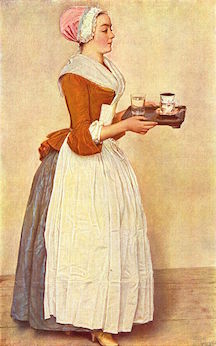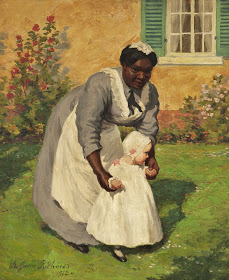Summary | Excerpt | Reading Guide | Reviews | Beyond the Book | Read-Alikes | Genres & Themes | Author Bio

This article relates to See What I Have Done
Bridget, the Borden family's Irish maid in See What I Have Done, is a young woman who came to the United States with visions of making a decent living and maybe one day getting married. Sadly, young immigrant women with limited skills and education were more often than not put to work as domestic help. Sadder still, with no union or legislative champion to protect them from abuse and overwork, these women were often mistreated by their employers.
 Maids, nannies and housekeepers have a long, disheartening history that doesn't show signs of too much improvement. Once upon a time, even families of limited means, such as those portrayed in mid-18th century novels of Wharton, Alcott and Dickens, had domestic help. They would just as soon sell family heirlooms as try to get along without someone to cook, clean and help them dress. These employees usually lived in separate but attached quarters so they could be on call 24/7. Room and board were considered part of their compensation but often they were begrudged the "luxury" of dining on the same food they prepared for their employers and they had to make do with small living quarters. Notwithstanding the television glamour of Downton Abbey's staff, few domestic workers, whether in England or the colonies, enjoyed much comfort.
Maids, nannies and housekeepers have a long, disheartening history that doesn't show signs of too much improvement. Once upon a time, even families of limited means, such as those portrayed in mid-18th century novels of Wharton, Alcott and Dickens, had domestic help. They would just as soon sell family heirlooms as try to get along without someone to cook, clean and help them dress. These employees usually lived in separate but attached quarters so they could be on call 24/7. Room and board were considered part of their compensation but often they were begrudged the "luxury" of dining on the same food they prepared for their employers and they had to make do with small living quarters. Notwithstanding the television glamour of Downton Abbey's staff, few domestic workers, whether in England or the colonies, enjoyed much comfort.
 Still without a champion well into the 20th century, domestic workers were excluded from protection under both the National Labor Relations Act and the Fair Labor Standards Act in the labor friendly 1930s. As recently as 2012, a Mother Jones article states: "Governor Jerry Brown rejected legislation that would have provided overtime pay, meal breaks, and other labor protections to an estimated 200,000 caregivers, nannies, and housecleaners in California." And the Senate's 2013 plan for immigrants' "pathway to citizenship" failed to mention domestic workers.
Still without a champion well into the 20th century, domestic workers were excluded from protection under both the National Labor Relations Act and the Fair Labor Standards Act in the labor friendly 1930s. As recently as 2012, a Mother Jones article states: "Governor Jerry Brown rejected legislation that would have provided overtime pay, meal breaks, and other labor protections to an estimated 200,000 caregivers, nannies, and housecleaners in California." And the Senate's 2013 plan for immigrants' "pathway to citizenship" failed to mention domestic workers.
More than one hundred years since Bridget resented her uncaring employers, and despite frequent attempts by several of her successors to unionize or advocate for domestic workers, only a little progress has been made. While domestic workers have made some gains - In 2016, Governor Brown signed a bill granting them overtime protections, for instance - race, ethnicities and origins have changed, but little else.
The Chocolate Girl, by Jean-Étienne Liotard
Painting of Nanny by Lee Greene Richards (1878-1950)
Filed under Society and Politics
![]() This "beyond the book article" relates to See What I Have Done. It originally ran in August 2017 and has been updated for the
June 2018 paperback edition.
Go to magazine.
This "beyond the book article" relates to See What I Have Done. It originally ran in August 2017 and has been updated for the
June 2018 paperback edition.
Go to magazine.




Children are not the people of tomorrow, but people today.
Click Here to find out who said this, as well as discovering other famous literary quotes!
Your guide toexceptional books
BookBrowse seeks out and recommends the best in contemporary fiction and nonfiction—books that not only engage and entertain but also deepen our understanding of ourselves and the world around us.